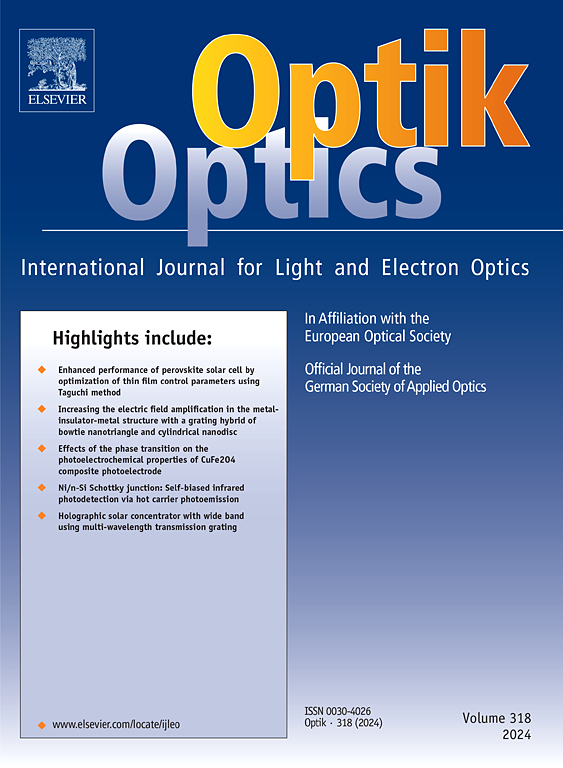Femtosecond laser-induced breakdown spectroscopy of aluminum plasma under the vacuum & air environments at various laser irradiances
IF 3.1
3区 物理与天体物理
Q2 Engineering
引用次数: 0
Abstract
The effect of environmental conditions and irradiances on femtosecond laser-induced breakdown spectroscopy of Aluminum (Al) plasma has been investigated. For this purpose, a femtosecond laser (1030 nm, 220 fs) was employed to irradiate the Al targets under air and vacuum environments at different laser irradiances ranging from 1.8 TWcm−2 to 5.4 TWcm−2. LIBS analysis shows that optical intensity of emission spectra and plasma parameters (electron temperature “Te” and electron number density “ne”) are increased with increasing the laser irradiances of Al plasma under both environments. The electron temperature is evaluated by using both Boltzmann and Saha Boltzmann distributions, whereas electron density is evaluated by using Stark broadening. With increasing laser irradiances, the values of Te of Al plasma increases from 8061 K to 8745 K under vacuum environment, whereas, for air Te increases from 8203 K to 8874 K. In case of Saha Boltzmann plot, the values of Te under vacuum vary from 8467 K to 8949 K and in air environment the estimated values of Te increases from the 8600 K to 9027 K. Likewise, the values of ne of Al plasma vary from 8.52 x 1018 cm−3 to 9.22 x 1018 cm−3 under vacuum environmental condition, while in case of air, the values of ne vary from 8.72 x 1018 cm−3 to 9.38 x 1018 cm−3. Slightly higher values of Al plasma parameters in air as compared to vacuum are explainable on the basis of confinement effect offered by 760 Torr atmospheric pressure. The air environment restricts free expansion of Al plasma that results into enhanced rate of collisional excitation, recombination with increased life time of plasma that slows down the plasma plume. The laser-target interaction process of air also causes exothermic reactions of reactive gases (H2, O2, CO2 etc) which are responsible for enhanced energy coupling to target in addition to laser energy deposition which in turn increases ablation rate and evaporation of the target. The increasing trends of emission intensity and plasma parameters with the increasing laser irradiances are attributed to enhanced mass ablation rate due to more energy deposition that increases the excitation and de-excitation within the plasma. The higher values of Al plasma parameters under certain environments make it more beneficial for various applications including surface structuring, electron ion implantation, pulse laser deposition of thin films and other industrial applications.
求助全文
约1分钟内获得全文
求助全文
来源期刊

Optik
物理-光学
CiteScore
6.90
自引率
12.90%
发文量
1471
审稿时长
46 days
期刊介绍:
Optik publishes articles on all subjects related to light and electron optics and offers a survey on the state of research and technical development within the following fields:
Optics:
-Optics design, geometrical and beam optics, wave optics-
Optical and micro-optical components, diffractive optics, devices and systems-
Photoelectric and optoelectronic devices-
Optical properties of materials, nonlinear optics, wave propagation and transmission in homogeneous and inhomogeneous materials-
Information optics, image formation and processing, holographic techniques, microscopes and spectrometer techniques, and image analysis-
Optical testing and measuring techniques-
Optical communication and computing-
Physiological optics-
As well as other related topics.
 求助内容:
求助内容: 应助结果提醒方式:
应助结果提醒方式:


